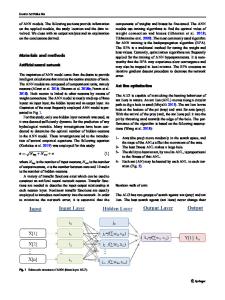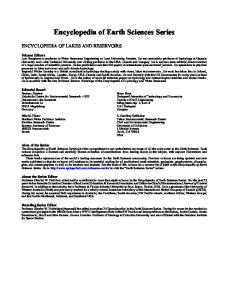A coiflet LDMR and coiflet OB-ELM for river suspended sediment load prediction
- PDF / 3,429,331 Bytes
- 18 Pages / 595.276 x 790.866 pts Page_size
- 26 Downloads / 349 Views
ORIGINAL PAPER
A coiflet LDMR and coiflet OB‑ELM for river suspended sediment load prediction B. B. Hazarika1 · D. Gupta1 · M. Berlin1 Received: 15 June 2020 / Revised: 23 September 2020 / Accepted: 30 September 2020 © Islamic Azad University (IAU) 2020
Abstract The forecast of suspended sediment load in a river is a complicated task due to different parameters such as tropical climate, excessive precipitation, transport, etc. The wavelet transformation strategy helps to investigate time and frequency information for estimating SSL by decomposing data into separate sub-series. More recently, several works were performed for SSL forecasting using several wavelet conjunction models. In this work, two conjunction models are proposed and applied for SSL forecast: coiflet wavelet-based large margin distribution machine-based regression and coiflet wavelet-based optimization method-based extreme learning machine in SSL dataset of Tawang Chu river, India. The results are compared with twin support vector regression, large margin distribution machine-based regression, optimization-based extreme learning machine and very recently proposed coiflet wavelet-based twin support vector regression models. The performance is assessed using the best-fit model using mean absolute, root mean square and symmetric mean absolute percentage error. Experimental outcomes indicate the effectiveness and usability of proposed models. Keywords Machine learning · Suspended sediment transport · Large margin distribution machine-based regression · Extreme learning machine · Optimization-based extreme learning machine
Introduction Suspended sediment load (SSL) transport in a river is an intricate hydrological process. Sediments are frequently transported as SSL in most of the rivers (Rajaee et al. 2010). SSL can have a significant impact on the quality of the water in rivers. The sediment may be a medium of transport for pollutants such as phosphorus (House et al. 1998) and sediment-sorbed bacteria (Badgley et al. 2011). Suspended solids are significantly affecting the water quality by acting as a carrier on enhancing the concentration of heavy metals such as manganese, mercury and zinc in the downstream (Cravotta and Bilger 2001). Increased SSL also reduces the water clarity and access to light, thus reducing plants and algae growth in the primary tropic level (Henley et al. 2000). Therefore, the SSL information is very helpful Editorial responsibility: Senthil Kumar Ponnusamy. * D. Gupta [email protected] 1
National Institute of Technology Arunachal Pradesh, Yupia, India
for hydrologists, sanitary engineers and many other earth scientists for many purposes including flood forecast, pollutant measurement, dam design, etc. In environmental engineering, SSL prediction is further significant because the sediment particles also carry pollutants (Olyaie et al. 2015). Hence, it is very necessary to predict the SSL in rivers accurately. Historically various traditional models have been commonly used for SSL forecast, in particular, the sedim
Data Loading...











